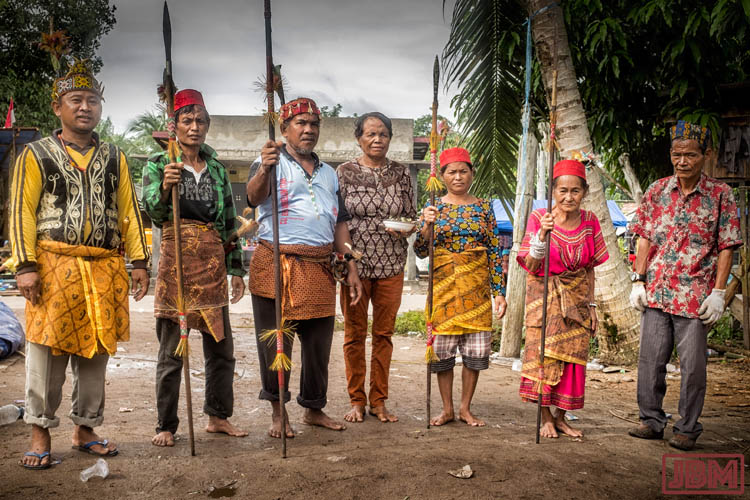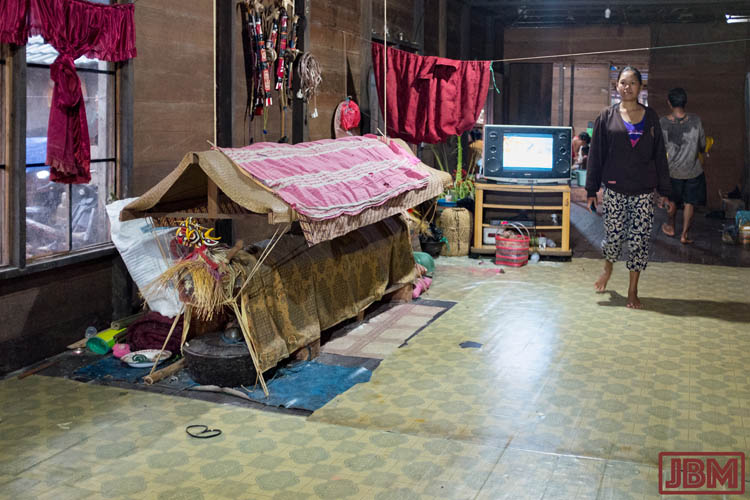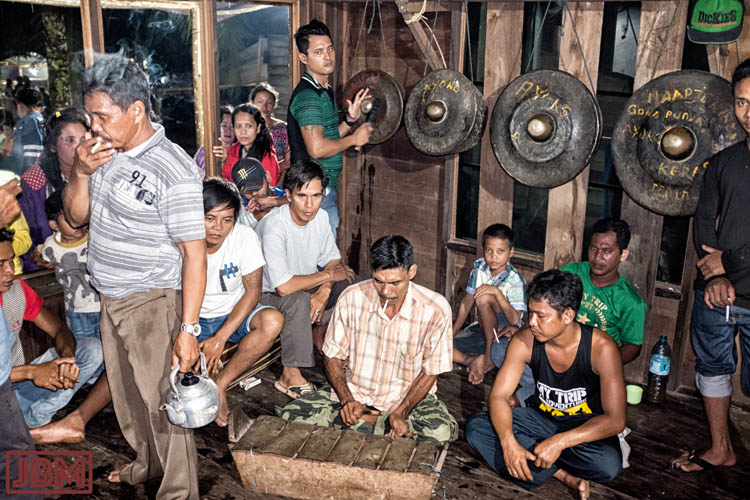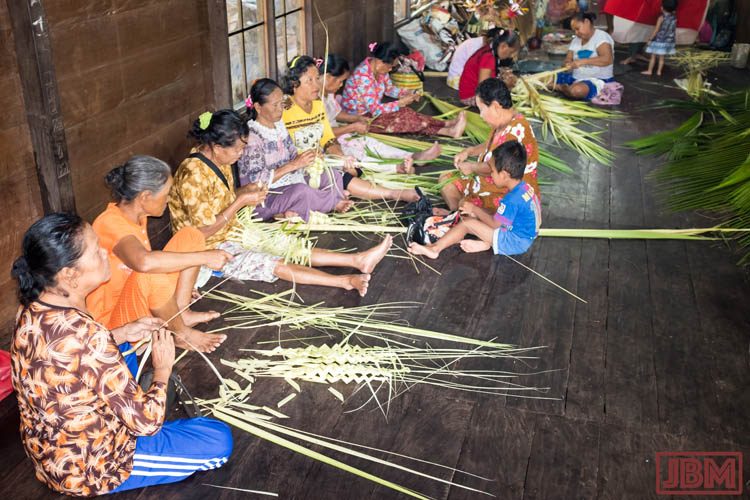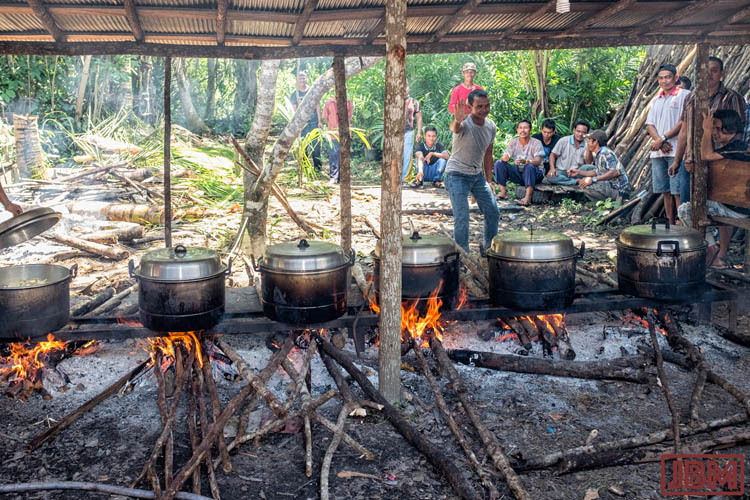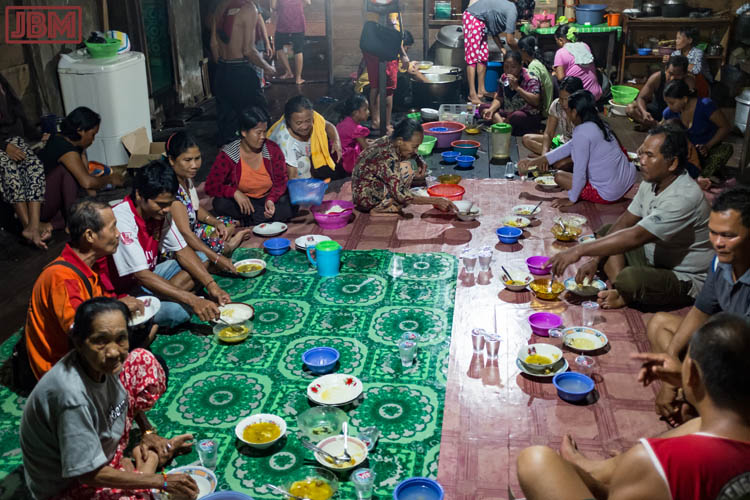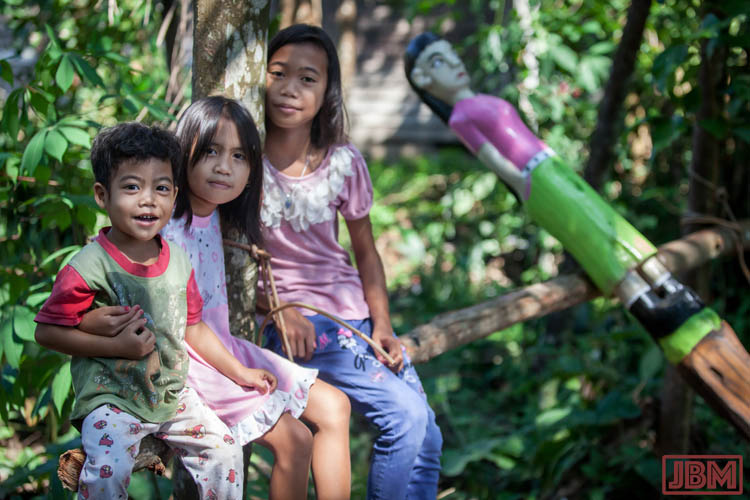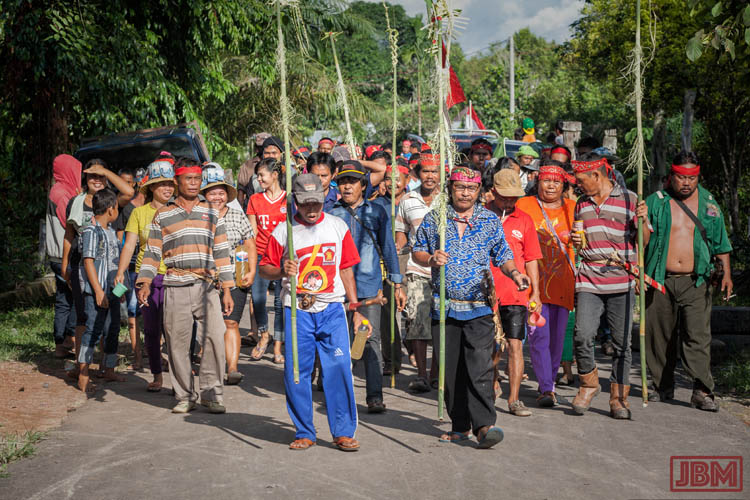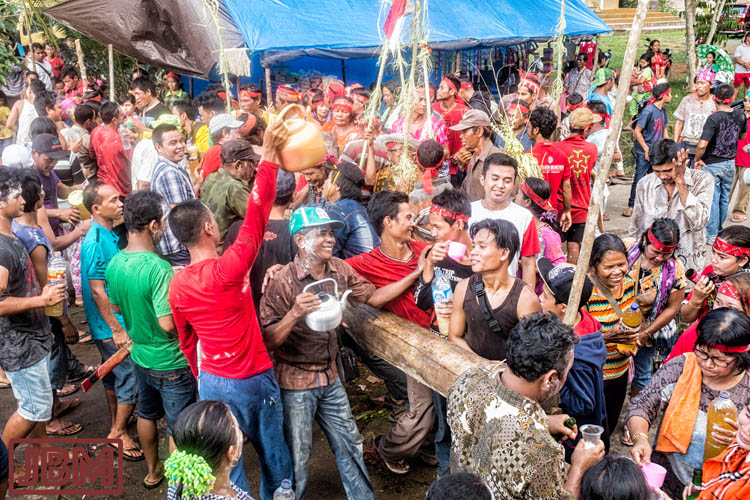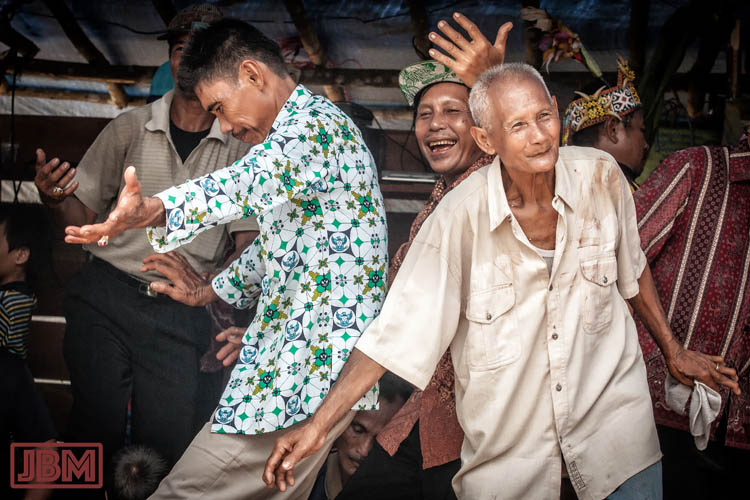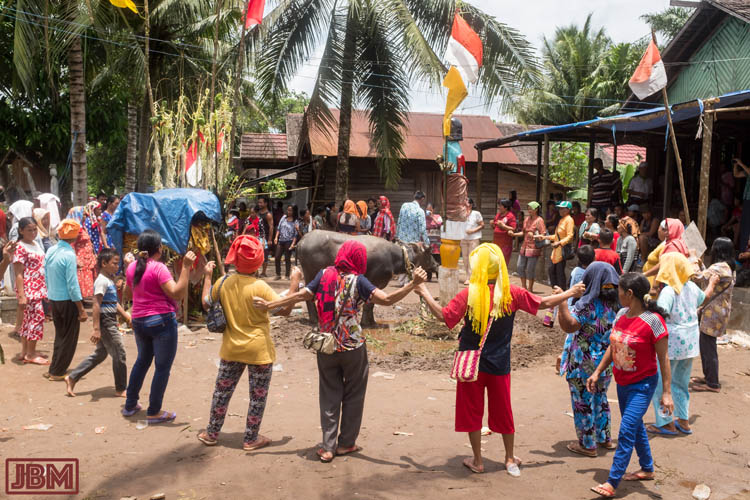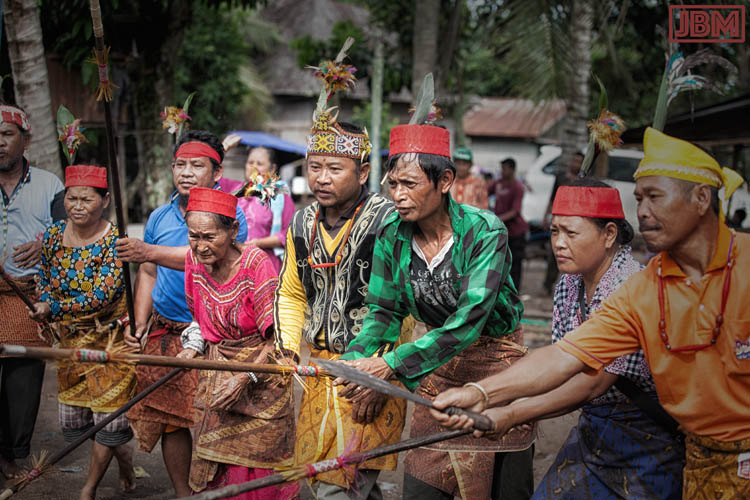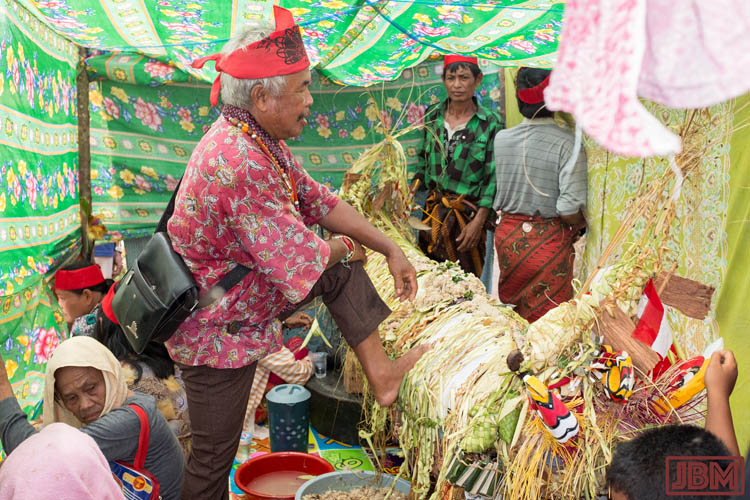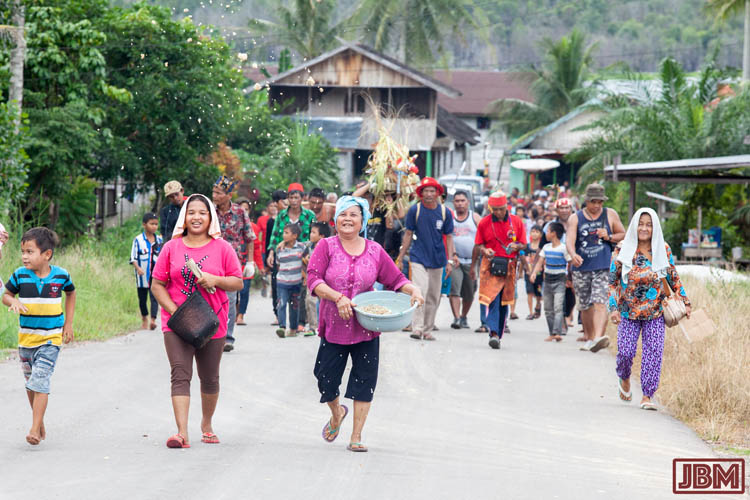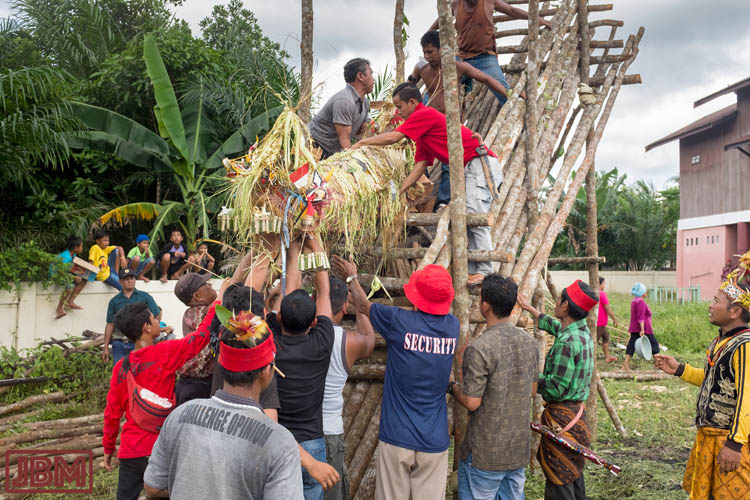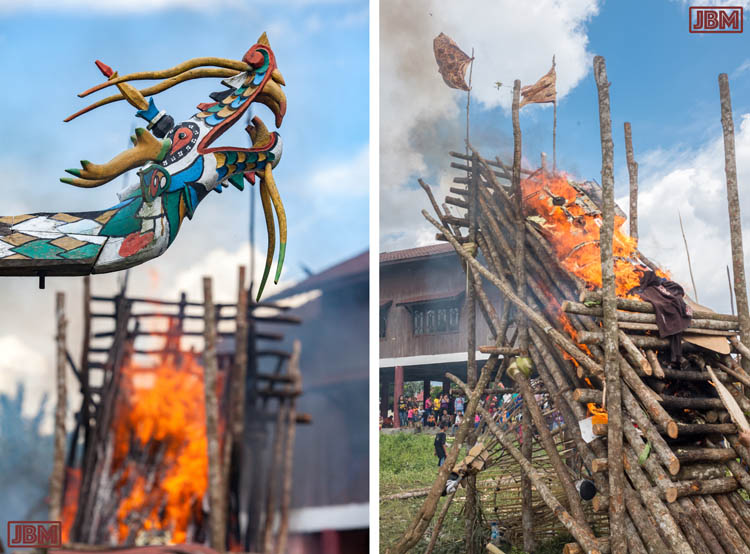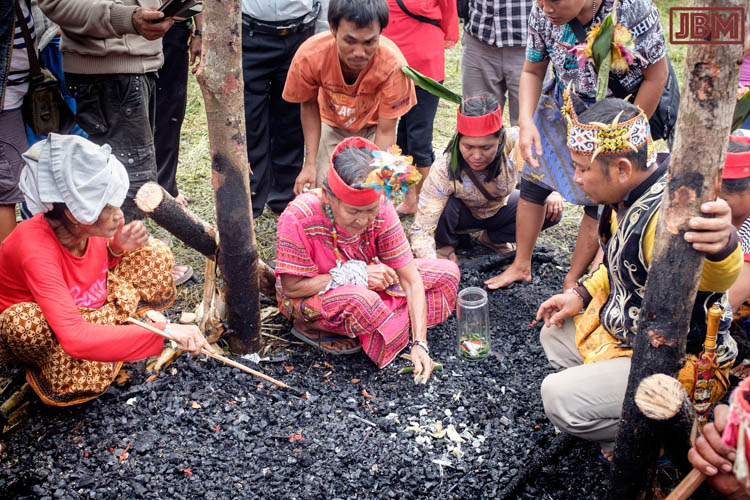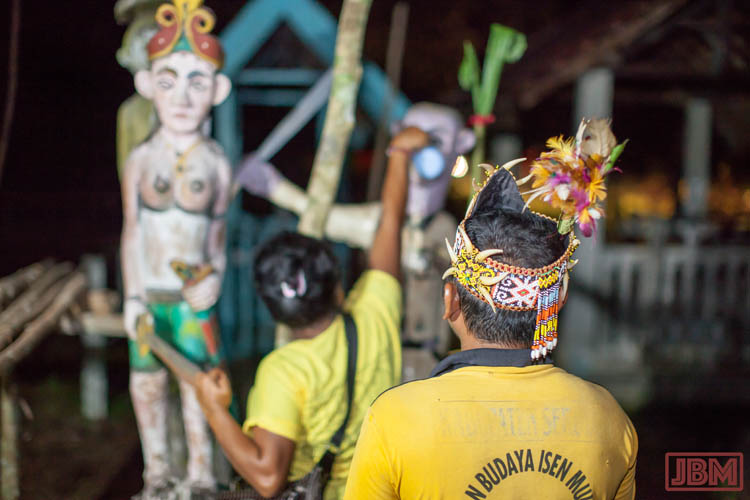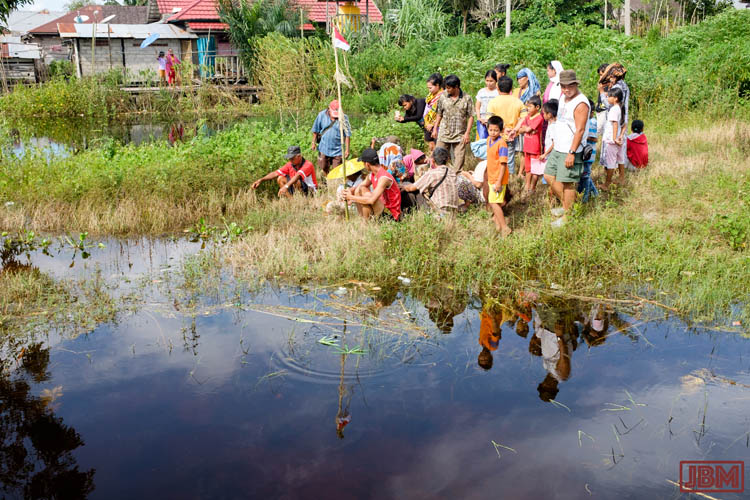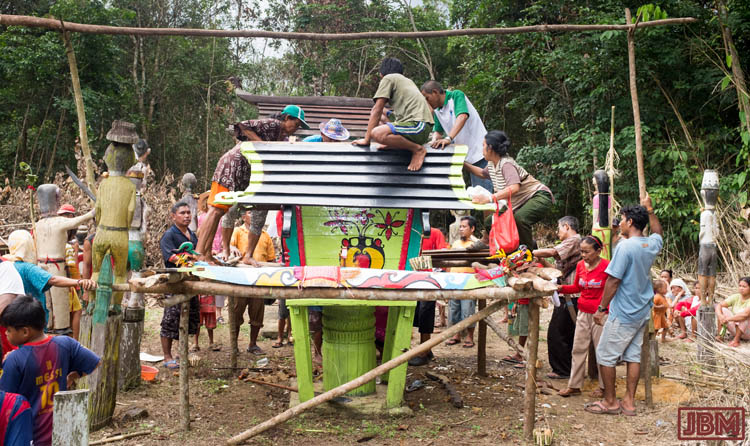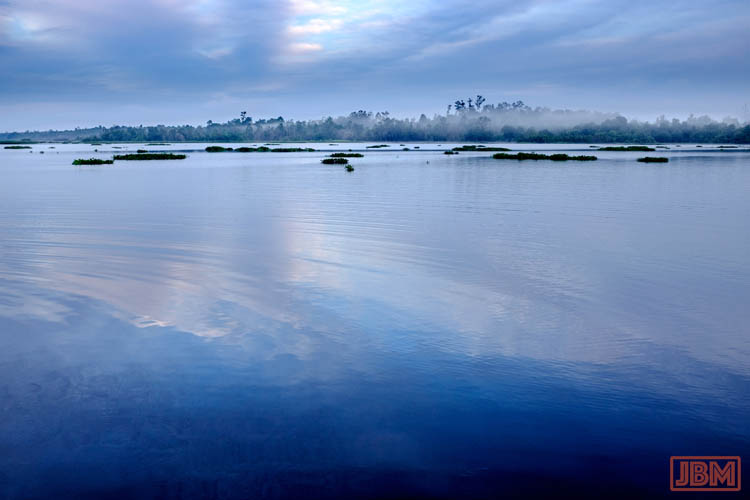Back in March we spent five days at a Tiwah (Dayak funeral ceremony) in the village of Bangkal, five hours west of here on Lake Sembuluh. I wrote previously about the marvellous sapundu (carved wooden pillars) of Bangkal, and about the variety of bukung figures that attended. The Tiwah ceremony itself was pretty interesting too…
As always, we were encouraged to observe, make photographs and ask lots of questions. The family (indeed the entire Bangkal village community) are kind and generous, and were keen for us to understand their Tiwah – which is the biggest and most important ceremonial event of the Dayak people here in Central Kalimantan.
Pak Popong Itek passed away in November, leaving behind his wife Ibu Mereka Lakau (2nd from the right in the photo above) five adult children – two sons (Bapak Yanto and Bapak Rasono) and three daughters (Ibu Enie, Ibu Eri, and Ibu Suri). As well as a number of grandchildren…
He was a respected elder and prominent member of Bangkal village, and the family chose to honour his memory, and to confirm the family’s place in the community, by holding a big Tiwah ceremony for the entire village (plus many people from other villages of the Dayak Tamuan) to attend.
However, the main purpose of the Tiwah, at least for adherents of the Dayak Kaharingan religion, is to equip the soul of the deceased, and help him along the difficult journey through the Upper World to the ‘Prosperous Village’ – the Dayak heaven of Lewu Tatau.
After he passed away, Pak Popong’s body was washed with tea, some ‘plumbing’ work was done and, dressed in ordinary clothes, he was placed in a coffin (runi in the Dayak Tamuan language) which remained in the communal area (lounge room, if you like) of the family home, for the following four months. Three times a day, at family mealtimes, he was brought food, coffee, baram (rice wine), cigarettes and sirih (betel).
His coffin featured a prominent carved naga (dragon) figure, which seems to be particularly significant in Bangkal, as we saw carved naga in many locations there. The coffin was draped with fine textiles, and it had an uninterrupted view of the television set. I don’t think he got to keep the remote.
A gong orchestra was set up at one end of the house, and complex syncopated rhythms were pounded out during all of he ritual activities of the Tiwah. There seemed to be an endless supply of men and boys (but no women or girls) ready and able to play. It’s thirsty work, and there was an equally endless supply of baram rice wine to refresh the musicians – served in glasses, plastic bottles – or kettles as above.
Many women of the village were engaged in making decorative katupat from daun kelapa (coconut palm leaves). These were later used to ornament the coffin, the sankaraya, and in offering bowls. There are seven different designs that they make (seven is a significant number to the Dayaks). Some of the designs are quite complex, but the women’s hands worked away without pause, almost automatically. Sometimes children would come and sit, watching and learning.
This kind of cooperative community effort is still very common in Dayak village communities – indeed in Indonesia generally. The Indonesians call it gotong royong, and are very proud of it as a national characteristic – even though it is becoming less common as communities fragment and ‘modernise’. The Dayaks also refer to it as habaring hurung, and a big, expensive and complex event like a Tiwah would be impossible without practical (and financial) assistance from many people.
Out the back of the house, under a temporary awning, was a big open cooking area. The big pots, mostly tended by men, contained rice, root vegetables, slices of the trunk of young kelapa sawit (oil palm!), and pork stew (babi ketjap). There was lots of easy conversation, laughter, and consumption of baram rice wine.
Nearby were the temporary bamboo pens which held the 18 pigs that were awaiting sacrificial slaughter and consumption, and this was also where the pigs, cow and buffalo were butchered after being slaughtered out in front of the house.
Back inside, the host family served food to everyone, and there were always people sitting and eating in the area next to the kitchen. Countless meals were served, and the kitchen was a scene of continuous cooking up, serving up and washing up. It all worked remarkably smoothly and efficiently, seemingly without anyone in particular being in charge.
On the other side of the road through the village, and down by the lakefront, Pak Komsi was putting the finishing touches to the three sapundu that he had carved for Pak Popong’s Tiwah. Some of the village children looked on – though they were more interested in the bule (white-skinned foreign) visitors in their village.
The sapundu were carved (as always) from kayu ulin (ironwood – Eusideroxylon zwageri), which they recover from fallen logs in the few remaining forest areas. Nowadays there are few of the valuable ulin trees growing in the region (or elsewhere in Kalimantan). The area surrounding Bangkal village is now almost entirely blanketed by oil palm plantations.
There are five villages in the region that are predominantly populated by Dayak Tamuan people, and large numbers of them came to the Tiwah, to pay their respects and to provide financial, material and practical aid. They call this sharing of resources bayar handep. And it’s essential; a large Tiwah like this costs around Rp100,000,000 (around AU$10,000) – beyond the resources of all but the wealthiest families.
As I wrote previously, many of them arrived in groups of masked bukung figures, with paper money attached to their masks. Each contingent of bukung was accompanied by a vehicle loaded up with pigs, chickens, drinking water, rice, baram and other provisions.
But the biggest group arrived en masse in a ‘formal’ part of the Tiwah known as the laluhan.
Well the laluhan starts out formal – and ends up bacchanalian. The group of outsiders marches up to where a log has been placed across the road to block their entrance to the village and the Tiwah. They are questioned about their intentions and, once granted access, then have to chop through the log with a large mandau bush knife. While this is happening, revellers on either side of the barrier shower each other with water, baram and talcum powder, and prodigious quantities of baram are consumed in a very short time.
It was on for young and old. The insistent rhythms of the gong music inspired some happy and enthusiastic dancing.
Around the sankaraya and sapundu which are the focal point of the Tiwah, the dancing was more restrained.
The manganjan dance is repeated a number of times over the days of the Tiwah, with a few variations. The circle of dancers proceeds slowly in an anti-clockwise direction around the kerbau (buffalo) which is attached by a rattan halter to the sapundu. The purpose of the manganjan is to ask permission of the spirits for the buffalo to be sacrificed – so that its spirit can accompany Pak Popong’s soul to heaven.
Members of the immediate family repeatedly approach the kerbau, wielding spears and mandau. Shortly afterwards the animal is sacrificed, speared in turn by each of the family members until it collapses. As we have seen at other Tiwah, the animal is finally killed by a Muslim villager in halal manner – so that all villagers (not just those of the Kaharingan religion) are then able to share in the meat.
A small temporary structure, enclosed with textiles, was constructed in the yard near the sankaraya. Pak Popong’s coffin was carried inside, and close family members and the ritual leaders (basir) entered and sat, the women facing away from the coffin, to listen to what seemed to be a series of eulogies for the deceased. Each speaker placed one foot on the coffin as they spoke.
The coffin was then carried through the village and up the small hill to the site of cremation. Women at the front of this procession threw handfuls of cooked rice.
A cremation tower had been constructed the previous day, and the coffin was placed up on top. Actually, the practice of cremation is unusual amongst Dayak followers of the Kaharingan religion. More commonly, the body is buried for some time (which may be for a year or for many years). The Tiwah is conducted subsequently, when the bones are disinterred, cleaned and placed in the family ossuary (sandung). And in some areas (such as the middle part of the Katingan River), the intact body may be placed, inside its coffin, directly into a family vault (known along the Katingan as a pambak).
With the aid of some accelerant, the flames quickly took hold, and the resultant ashes fell through the timber framework to form a pile below.
The fire having one its work, the ashes were hosed down until quite cool. Then came the most poignant part of the ceremony. Ibu Mereka Lakau squatted down and, quietly and methodically, picked through the ashes, removing the pieces of bone that she found and placing them into a glass jar. With some assistance, she continued until the jar was full.
That night, two new sapundu were erected beside the family ossuary (known as a sandung, in a forested area on the other side of the village. It was a rather eerie ceremony, conducted in an island of torchlight surrounded by near-total darkness.
On the following day, the immediate family gathered again at the cremation ground, and proceeded down to the lakeshore. As the basir recited prayers in the sacred sangiang language, and a single gong was struck every five seconds or so, Ibu washed the bones in the jar so they were clean and free of ashes.
Later that day, the top of the family sandung was opened up. The jar containing Bapak’s ashes, along with some personal effects, was carefully placed inside, and the sandung was sealed up again.
The main ceremonial activities of the Tiwah were now complete, and we left the next day. However other ritual observances were required over the following days and weeks to ensure that all was done properly. Even a small mistake in the performance of the rituals can have seriously adverse effects, both for the soul of the Pak Popong Itek on his journey through the Upper World to Lewu tatau – but also for those Bangkal residents still living by Lake Sembuluh, here in the Middle World.

